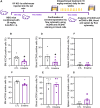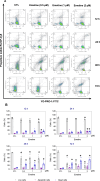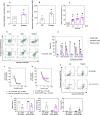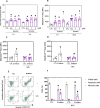Emetine induces oxidative stress, cell differentiation and NF-κB inhibition, suppressing AML stem/progenitor cells
- PMID: 38684672
- PMCID: PMC11059384
- DOI: 10.1038/s41420-024-01967-8
Emetine induces oxidative stress, cell differentiation and NF-κB inhibition, suppressing AML stem/progenitor cells
Abstract
Acute myeloid leukemia (AML) is a fatal malignancy of the blood and bone marrow. Leukemic stem cells (LSCs) are a rare subset of leukemic cells that promote the development and progression of AML, and eradication of LSCs is critical for effective control of this disease. Emetine is an FDA-approved antiparasitic drug with antitumor properties; however, little is known about its potential against LSCs. Herein, we explored the antileukemic potential of emetine, focusing on its effects on AML stem/progenitor cells. Emetine exhibited potent cytotoxic activity both in hematologic and solid cancer cells and induced AML cell differentiation. Emetine also inhibited AML stem/progenitor cells, as evidenced by decreased expression of CD34, CD97, CD99, and CD123 in KG-1a cells, indicating anti-AML stem/progenitor cell activities. The administration of emetine at a dosage of 10 mg/kg for two weeks showed no significant toxicity and significantly reduced xenograft leukemic growth in vivo. NF-κB activation was reduced in emetine-treated KG-1a cells, as shown by reduced phospho-NF-κB p65 (S529) and nuclear NF-κB p65. DNA fragmentation, YO-PRO-1 staining, mitochondrial depolarization and increased levels of active caspase-3 and cleaved PARP (Asp214) were detected in emetine-treated KG-1a cells. Moreover, treatment with the pancaspase inhibitor Z-VAD(OMe)-FMK partially prevented the apoptotic cell death induced by emetine. Emetine treatment also increased cellular and mitochondrial reactive oxygen species, and emetine-induced apoptosis in KG-1a cells was partially prevented by the antioxidant N-acetylcysteine, indicating that emetine induces apoptosis, at least in part, by inducing oxidative stress. Overall, these studies indicate that emetine is a novel potential anti-AML agent with promising activity against stem/progenitor cells, encouraging the development of further studies aimed at its clinical application.
© 2024. The Author(s).
Conflict of interest statement
The authors declare no competing interests.
Figures








Similar articles
-
Ru(II)-thymine complex suppresses acute myeloid leukemia stem cells by inhibiting NF-κB signaling.Biomed Pharmacother. 2025 Jun;187:118080. doi: 10.1016/j.biopha.2025.118080. Epub 2025 Apr 26. Biomed Pharmacother. 2025. PMID: 40288174
-
Bortezomib suppresses acute myelogenous leukaemia stem-like KG-1a cells via NF-κB inhibition and the induction of oxidative stress.J Cell Mol Med. 2024 Apr;28(8):e18333. doi: 10.1111/jcmm.18333. J Cell Mol Med. 2024. PMID: 38652192 Free PMC article.
-
Piplartine eliminates CD34 + AML stem/progenitor cells by inducing oxidative stress and suppressing NF-κB signalling.Cell Death Discov. 2024 Mar 19;10(1):147. doi: 10.1038/s41420-024-01909-4. Cell Death Discov. 2024. PMID: 38503729 Free PMC article.
-
Stem cell factor as a survival and growth factor in human normal and malignant hematopoiesis.Acta Haematol. 1996;95(3-4):257-62. doi: 10.1159/000203893. Acta Haematol. 1996. PMID: 8677752 Review.
-
Identification of TIM-3 as a Leukemic Stem Cell Surface Molecule in Primary Acute Myeloid Leukemia.Oncology. 2015;89 Suppl 1:28-32. doi: 10.1159/000431062. Epub 2015 Nov 10. Oncology. 2015. PMID: 26551150 Review.
Cited by
-
Therapeutic innovations: targeting ROS production in AML with natural and synthetic compounds.Naunyn Schmiedebergs Arch Pharmacol. 2025 Mar 31. doi: 10.1007/s00210-025-04054-6. Online ahead of print. Naunyn Schmiedebergs Arch Pharmacol. 2025. PMID: 40163149 Review.
-
Norchelerythrine from Corydalis incisa (Thunb.) Pers. promotes differentiation and apoptosis by activating DNA damage response in acute myeloid leukemia.Int J Oncol. 2025 Mar;66(3):17. doi: 10.3892/ijo.2025.5723. Epub 2025 Feb 7. Int J Oncol. 2025. PMID: 39918000 Free PMC article.
-
Divergent Processing of Cell Stress Signals as the Basis of Cancer Progression: Licensing NFκB on Chromatin.Int J Mol Sci. 2024 Aug 7;25(16):8621. doi: 10.3390/ijms25168621. Int J Mol Sci. 2024. PMID: 39201306 Free PMC article. Review.
References
-
- American Cancer Society. Cancer facts & figures 2023. Atlanta: American Cancer Society; 2023.
LinkOut - more resources
Full Text Sources
Research Materials
Miscellaneous

